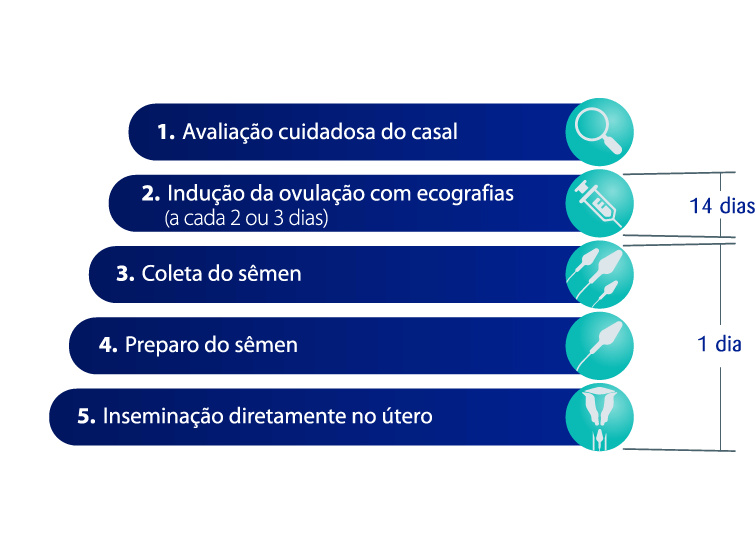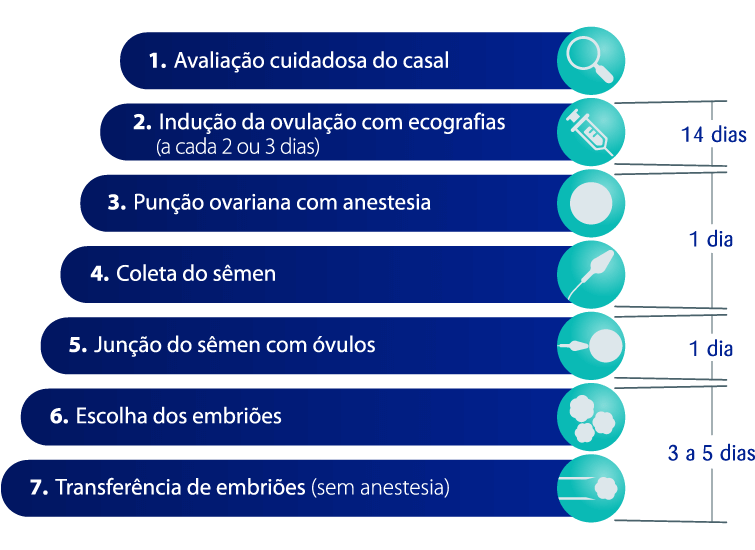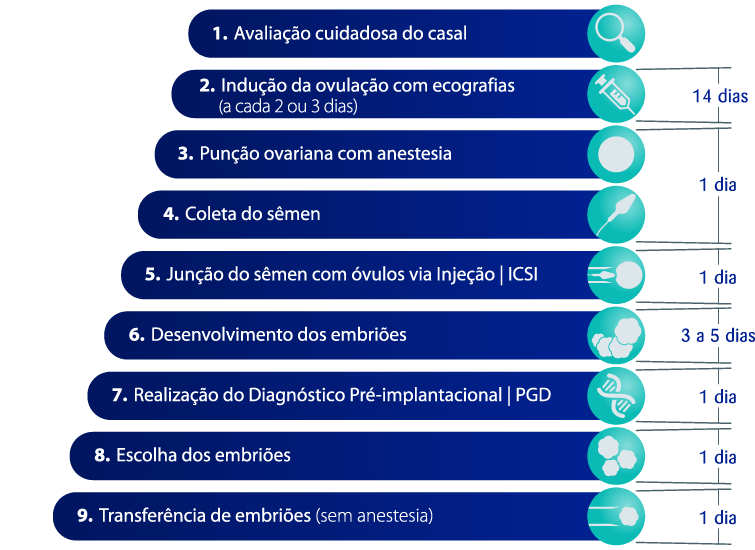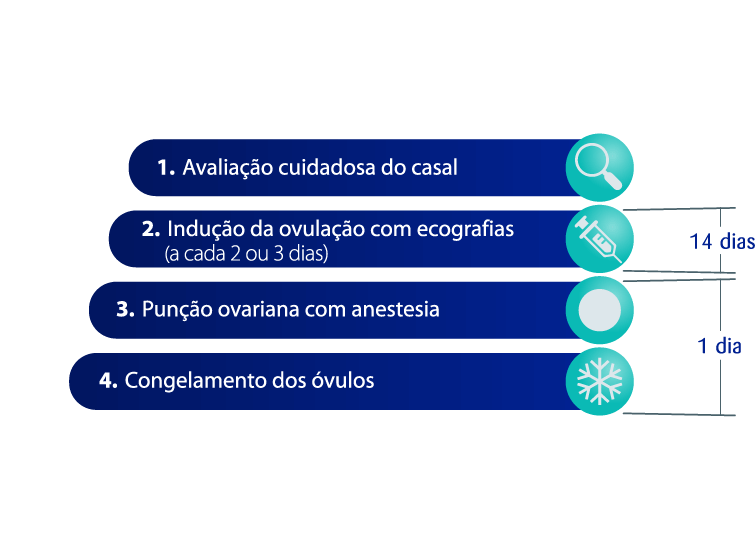JBRA Assisted Reproduction

| 31 de Maio de 2020
Polimorfismos GDF9: influência na resposta ovariana em mulheres submetidas à hiperestimulação ovariana controlada
ABSTRACT
Objective: The study looked into the possible influence
of GDF9 polymorphisms on ovarian response in women with a normal ovarian reserve undergoing controlled ovari- an hyperstimulation for in vitro fertilization (IVF).
Methods: This cross-sectional study included 67 wom- en with normal ovarian reserve aged 30-39 years submit- ted to controlled ovarian hyperstimulation for IVF. We se- quenced four polymorphisms in the GDF9 gene (C398G, C447T, G546A, and G646A) and analyzed their influence on follicular and oocyte outcomes.
Results: The mutant allele C398G decreased the total number of follicles >17mm (6.49 vs. 4.33, p=0.001), total number of follicles (10.11 vs. 7.33, p=0.032), number of MII oocytes retrieved, and serum progesterone levels on trigger day. The C447T polymorphism was associated with a greater number of follicles between 12 and 14 mm on the day of r-hCG, while the G546A polymorphism was associ- ated with lower serum progesterone levels on trigger day.
Conclusions: GDF9 gene polymorphisms C398G and C447T adversely affected ovarian response in women un- dergoing controlled ovarian hyperstimulation. These find- ings show that in addition to playing a role in the early stages of folliculogenesis, GDF9 polymorphisms have an important impact on the final stage of oocyte development.
Keywords: GDF9, polymorphism, in vitro fertilization, oo- cyte, follicle retrieval
INTRODUCTION
In vitro fertilization is an efficient assisted reproduc- tion technology used to treat infertility in women. One of the essential elements in successful IVF is the number of eggs produced following controlled ovarian hyperstimula- tion (COH) (van Loendersloot et al., 2014). Several fac- tors regulate follicular growth and depletion; these include members of the transforming growth factor-β (TGFB) su- per family (Knight & Glister, 2006; Trombly et al., 2009; Pangas, 2012). GDF-9, a member of TGFB super family, is an oocyte-derived factor that is preferentially expressed in the oocytes of humans and mice (Chang et al., 2016) known to influence follicle growth and depletion rates (Simoni et al., 2008; Knight & Glister, 2006; Juengel & McNatty, 2005; Broekmans et al., 2009). GDF-9 genetic variants have been associated with abnormal follicular loss and potential premature ovarian failure (POF) (Broekmans et al., 2009).
GDF-9 contributes to ovarian folliculogenesis, a process that controls various granulosa cell processes and the ovu- lation rate. GDF-9 supports the proliferation of granulosa cells and the growth of cumulus cells, the halt of follic- ular apoptosis, and the growth of oocytes and embryos (Vitt et al., 2000; Yan et al., 2001; Orisaka et al., 2006; Yeo et al., 2008). Additionally, GDF9 stimulates granulosa cell proliferation (Vitt et al., 2000) and cumulus expansion (Yan et al., 2001), inhibits follicular apoptosis (Orisaka et al., 2006), and enhances oocyte and embryo development (Yeo et al., 2008; Hussein et al., 2006). Taken together, these findings suggest that disrupting the GDF9 gene may prevent folliculogenesis and oogenesis, resulting in ovari- an failure. Consistent with these results, GDF9 mutations have been related to abnormal reproductive phenotypes in women, including POF (Hanrahan et al., 2004; Dixit et al., 2005; Chand et al., 2006), polycystic ovary syndrome (Sun et al., 2010; Wei et al., 2014), and dizygotic twinning (Palmer et al., 2006).
Single nucleotide polymorphisms (SNPs) of GDF-9 have been correlated with POF, suggesting that these variants may contribute to aberrant follicular development and oo- cyte loss (Chand et al., 2006; Laissue et al., 2006; Ko- vanci et al., 2007). Among the SNPs in the GDF9 gene that have been associated with infertility and POF (Kovanci et al., 2007), the most notable are C398-9G (Dixit et al., 2005), C447T (Dixit et al., 2005, Serdyńska-Szuster et al., 2016), G546A (Serdyńska-Szuster et al., 2016; Wang et al., 2010), and G646A (Dixit et al., 2005). Few studies re- garding the association between GDF9 polymorphisms and controlled ovarian hyperstimulation (COH) outcomes have been published (Wang et al., 2010; 2013). The aim of this study was to investigate the possible influence of GDF9 polymorphisms (C398G, C477T, G546A, and G646A) on ovarian response in women with a normal ovarian reserve undergoing COH for IVF.
MATERIALS AND METHODS
This cross-sectional study included women aged 30-39 years undergoing COH based on an r-FSH and r-GnRH an- tagonist protocol sequenced for four polymorphisms of the GDF-9 gene (C398-9G, C447T, G546A and G646A). The study was carried out at the Pronatus Assisted Reproduc- tion Center and at the Federal University of Rio Grande do Sul. The National Committee for Ethics and Research with Human Beings and the Ethics Committee of the Hospital de Clínicas de Porto Alegre approved the study and assigned it certificate no. 25525413.0.0000.5327 (Institutional Re- view Board equivalent).
João Paolo Bilibio1,2,3, Arivaldo José Conceição Meireles2,3, Emily De Conto3,4, Panila Longhi Lorenzzoni2, Fábio Costa do Nascimento2, João Sabino da Cunha-Filho3,4








